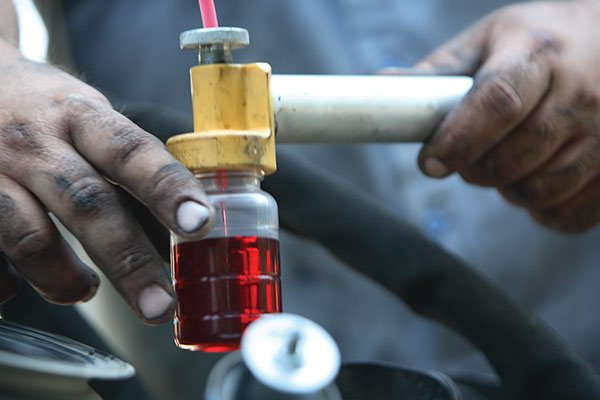Hydraulic Oil Testing
Conventional wisdom dictates that your hydraulic oil should be tested, at the very least, quarterly. For systems that are exposed to other elements, including marine hydraulic systems, testing may be more frequent.
One of the first and simplest steps in testing a hydraulic system is to check the fluid level and condition. The fluid level should be within the recommended range, as indicated by a sight glass or a dipstick.
To have your oil analyzed, you must take a sample of the lubricant and ship it to a qualified laboratory. Technicians subject the lubricant to a range of tests to determine the concentration of wear metals, fuel dilution, the lubricant’s total base number (TBN), oxidation and other information
Major contaminates in Hydraulic Oil Testing Service:
- Particle Count.
- Acid Number.
- Karl Fischer Water.
- Elemental Spectroscopy.
- Fourier Transform Infrared Spectroscopy (FTIR)
Benefits of Hydraulic Oil Testing:
- Monitoring of fluid degradation
- Optimal lubrication management
- Protection against corrosion and rust.
- Cost-effective maintenance planning
Who could avail Hydraulic Oil Testing Service?
- Oil analysis provides an in-depth view of the lubricant in your machinery. With consistent oil testing, small issues can be identified and dealt with before they become big problems. Certain types of wear in specific areas of the equipment are detected through oil analysis.

